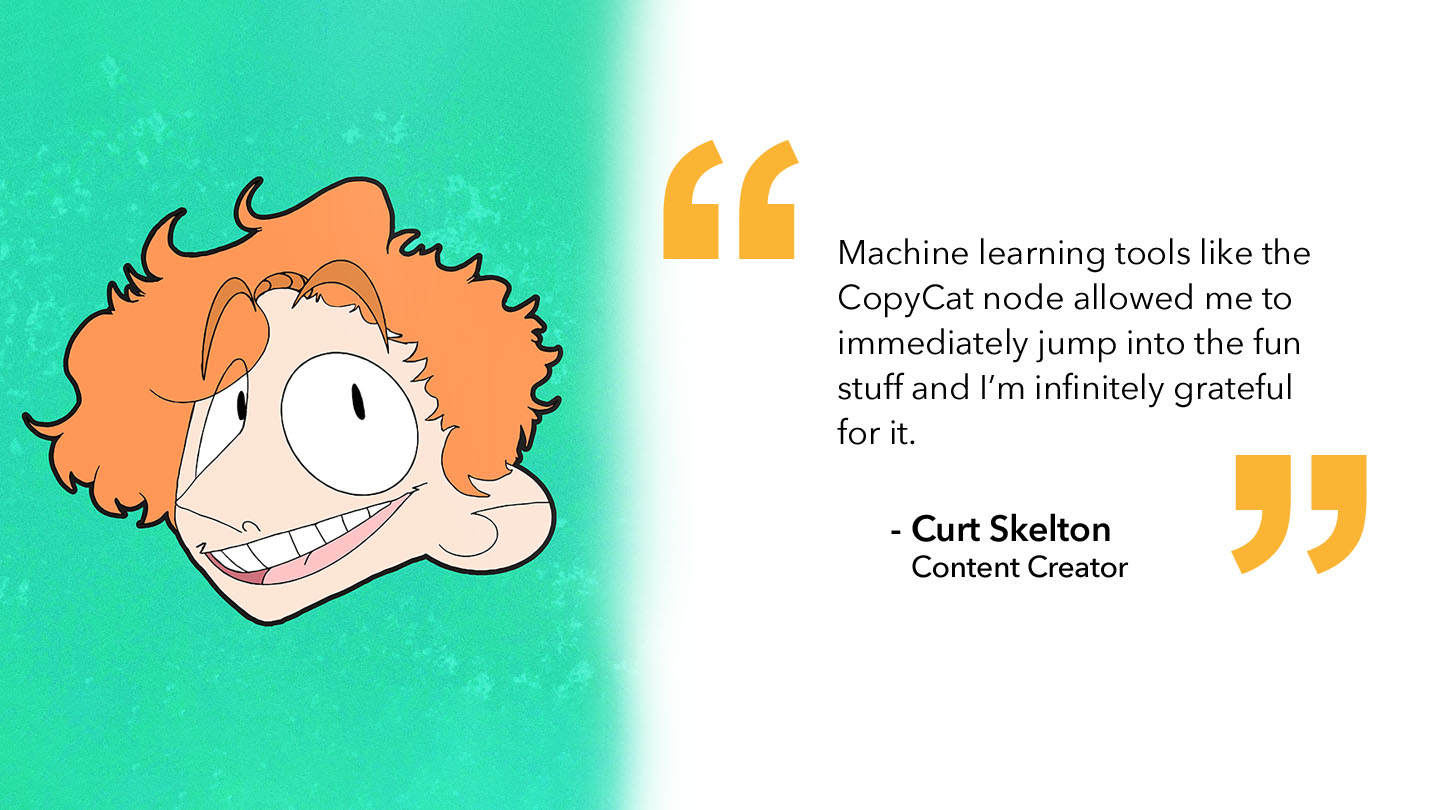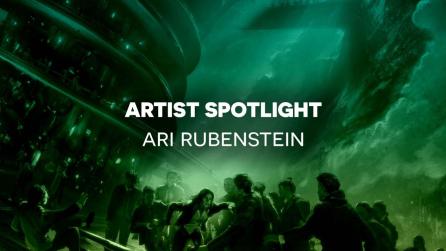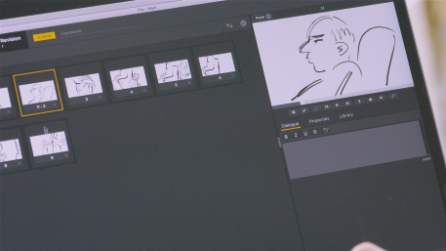Taking content creation to the next level.
TikTok might not be the first thing that springs to mind when you think about compositing and machine learning. But content creator Curt Skelton is taking TikTok videos to another level, thanks to his love for VFX, along with Nuke Studio, our multi-shot management, editorial and compositing software.
Curt considers himself to be obsessed with VFX, saying: “I was raised on Freddiew, Captain Disillusion and Corridor Digital. Those were my favorite YouTube channels growing up.”

Outside of VFX, Curt loves listening to emo rock band My Chemical Romance (MCR) and surrounds himself with the art that inspired them. If he had the chance to work on one of their music videos, he would’ve chosen ‘Na na na’.“The compositing in it is so raw and perfect," he explains. "There’s explosions from asset packs, lasers constantly flying across the screen, and the goofiest freeze frames. Looking back, I think that music video made me the editor I am today.”
We sat down with Curt to get more insights into how he uses Nuke to produce his work.
Q: Do you have a routine? What helps you get in ‘the zone’ as a content creator?
A: I can only hope that one day I develop a healthy work routine but at the moment my body forbids me from getting anything done when the sun is out. My proudest effects have been consistently made at around 3:00 AM for some reason. But when I’m forced to work during the day, luckily Red Bull and the Stuff You Should Know podcast has helped me through some long hours.
Q: What helps you visualize your ideas?
A: Music. So much music. I write almost all my videos backwards so sometimes I’ll just be sitting on a punchline for weeks, then the perfect song comes on and all at once the entire video forms in my head.

Q: Being an artist in the spotlight can open you up to criticism and negativity. How do you cope with that?
A: I’m always grateful for constructive criticism of my work — that’s why I love to post my stuff to VFX forums. It’s the mean and hateful comments I get from anonymous strangers that I don’t appreciate. I used to just ignore them but every time I scrolled past them in my comment section, it’d bum me out. So I just started deleting them and — oh, my God — does it feel good! I highly recommend that everyone does the same.
Q: How did you first get started with Nuke? Did you use tutorials or did you dive straight into the software?
A: When I taught myself After Effects I made a lot of mistakes that became habits — like pronouncing “gaussian” wrong for 10 years. So I’m making sure to learn Nuke the proper way. I watch a lot of tutorials from industry veterans and I even bought a book on digital compositing. I’m not taking any risks this time.

Q: How do you incorporate machine learning into your workflow?
A: I always start off with the boring parts like rotoscoping first, so when I get to the fun stuff later my creativity doesn’t screech to a halt. Machine learning tools like the CopyCat node allowed me to immediately jump into the fun stuff and I’m infinitely grateful for it.
Q: Does your workflow change project to project or has it adapted over time?
A: My workflow is definitely evolving the more experienced I become. I used to just tackle the frames as they came but now I start off by watching the raw file forwards and backwards, endlessly, until I have a strategic plan of attack. Certain things I’ve learned to take longer with so I don’t hate myself later, motion tracking being number one on that list. I can’t believe that I used to just accept the first track I got because I was too excited to jump into compositing.
Q: How does Nuke support you with your videos?
A: Without a doubt, the number one thing that Nuke allows me to do is try alternative ideas, quickly. If you wanted to try something new in a layer-based program, it was best to duplicate the project file and delete the last attempt manually. It was too linear and didn’t allow room to back up and try a different path like nodes do.
For instance, in my Black Parade video, I had a sloppy blue and green screen shot and I had no clue which was the best way to key it. I flip-flopped multiple times between the IBK and Keylight. If I were to do it today with the new machine learning tools, I’d have also been switching between Background Matting and MODNet. That’s why I love Nuke — it gives me access to multiple tools and the breathing room to try them out.

Q: Where did you get your inspiration for this particular video?
A: On TikTok, it’s a popular format to make it seem that a character narrowly avoided death just to later reveal in a comedic way that they actually did in fact die. So I wanted to put an MCR spin on this. Since their most iconic music video ‘Welcome to the Black Parade’ features a character coming to terms with their death, I wanted to use that as the basis for the punchline.
I started off by using images from the original music video to recreate it as accurately as possible but I soon realized that wasn’t fun. I wanted more room for creative freedom. So I found Gerard Way’s original concept art for the music video that featured bright explosions, giant amps and a marching skeleton army. I knew what I had to do.


Q: Could you walk us through your workflow for this particular artwork?
A: Thanks to all the planning done ahead of time, a majority of the work was already done before the footage was even brought into Nuke. All I had to do was lower the quality of my CG render to better match my footage. However, I really wanted to make this shot feel like it was all actually recorded from an iPhone and uploaded straight to TikTok. So I tried to reimplement artifacts that are unique to modern smartphones back into the composite. Things like delayed auto exposure, a flickering focus, and imperfect artificial bokeh.
Q: What resources would you recommend to someone who’s just getting started with Nuke?
A: I loved Citrine’s Animations’ How to use Nuke for Blender projects. One of the first things I wanted to comp in Nuke was a full CG shot and this tutorial held my hand the entire time. It taught some great basics without being boring and did some fairly advanced stuff without going too fast. I cannot recommend that video enough.
Q: Which features in Nuke are the most valuable to you?
A: Without a doubt, Cattery. I can’t believe that as a VFX Artist I am going to be alive to witness the extinction of manual rotoscoping. That is every indie compositor’s dream.
Q: Where can fellow Nuke and Foundry fans check out your work?
A: Sometimes I make TikToks @curt.skelton but if the Restrict Act passes and TikTok is no longer a thing, then nevermind.
Want to start creating content?


